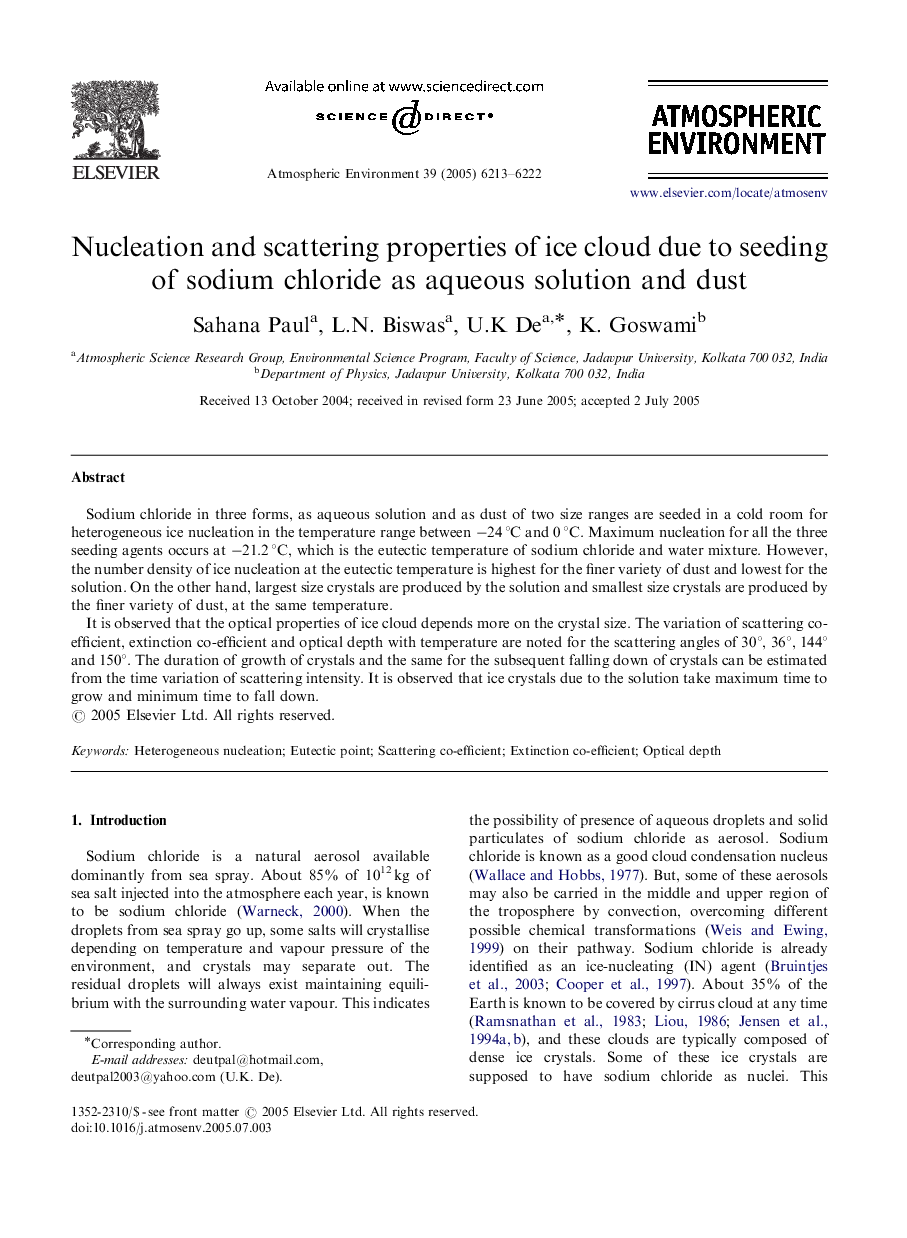| Article ID | Journal | Published Year | Pages | File Type |
|---|---|---|---|---|
| 4444636 | Atmospheric Environment | 2005 | 10 Pages |
Sodium chloride in three forms, as aqueous solution and as dust of two size ranges are seeded in a cold room for heterogeneous ice nucleation in the temperature range between −24 °C and 0 °C. Maximum nucleation for all the three seeding agents occurs at −21.2 °C, which is the eutectic temperature of sodium chloride and water mixture. However, the number density of ice nucleation at the eutectic temperature is highest for the finer variety of dust and lowest for the solution. On the other hand, largest size crystals are produced by the solution and smallest size crystals are produced by the finer variety of dust, at the same temperature.It is observed that the optical properties of ice cloud depends more on the crystal size. The variation of scattering co-efficient, extinction co-efficient and optical depth with temperature are noted for the scattering angles of 30°, 36°, 144° and 150°. The duration of growth of crystals and the same for the subsequent falling down of crystals can be estimated from the time variation of scattering intensity. It is observed that ice crystals due to the solution take maximum time to grow and minimum time to fall down.
